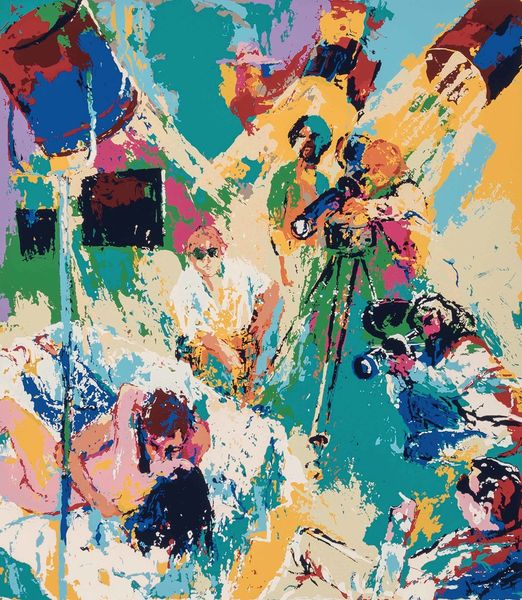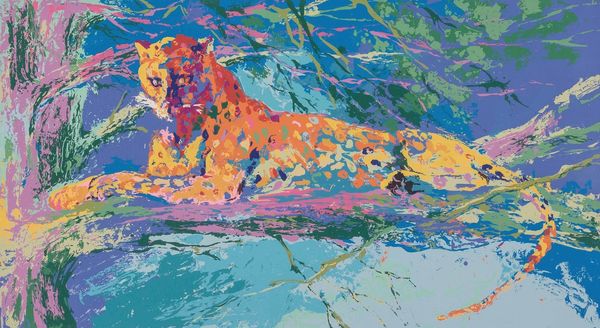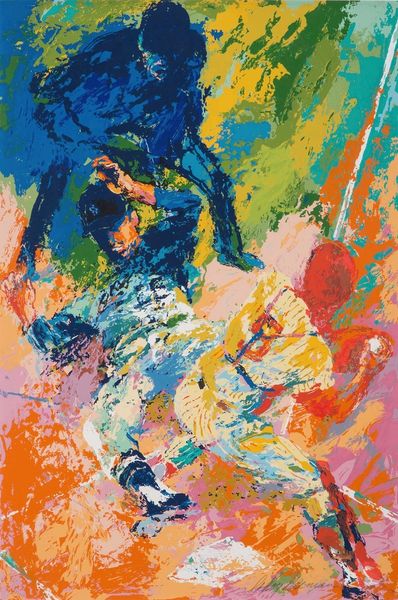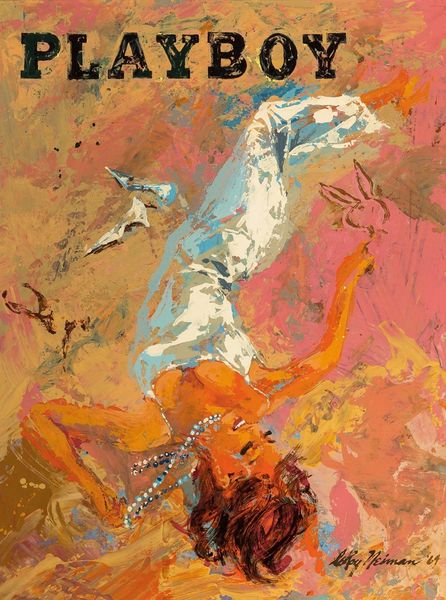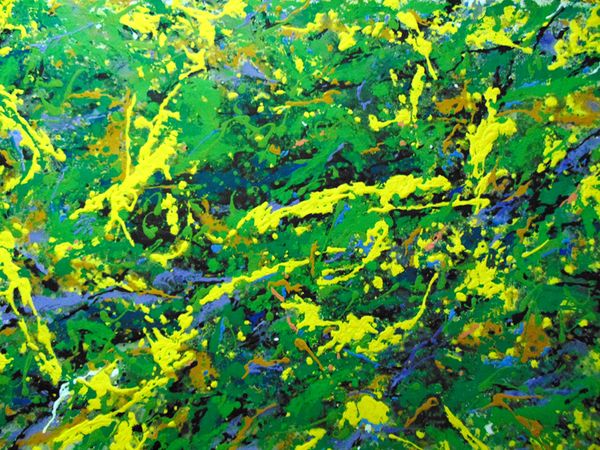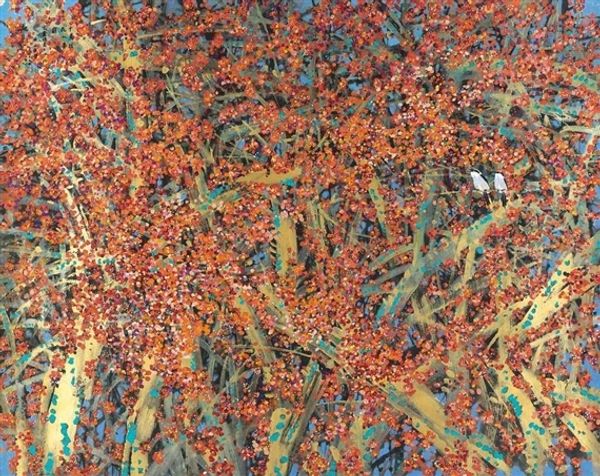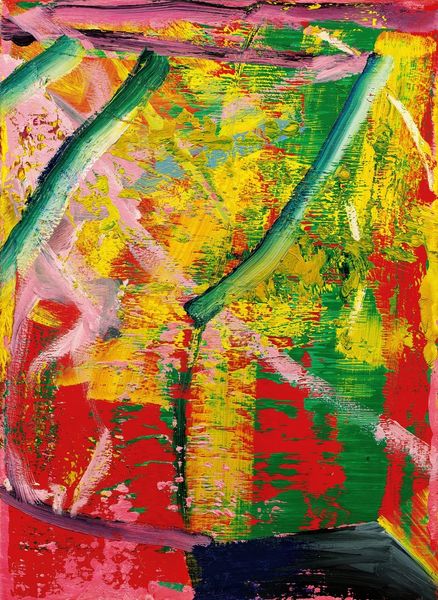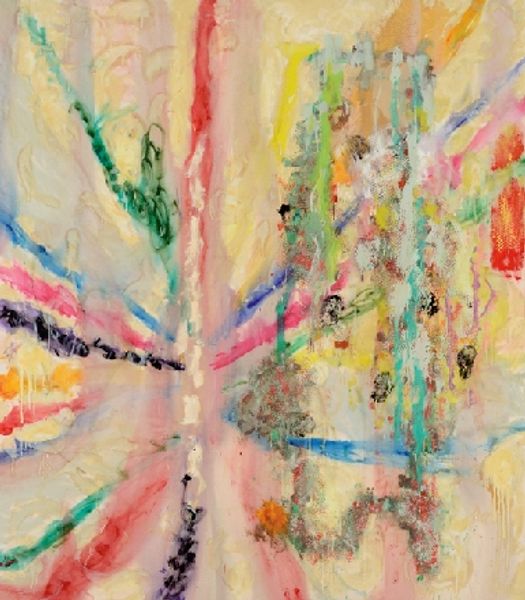
Copyright: Modern Artists: Artvee
Editor: This is LeRoy Neiman’s "Serengeti Leopard," created in 1989 using acrylic paint. It’s incredibly vibrant! The colors are so bold, almost unnatural, yet they capture a certain energy. What do you see in this piece from a formalist perspective? Curator: Immediately, the interplay of color asserts itself. Notice how Neiman uses high-key hues – vibrant yellows, reds, and blues – not to replicate the leopard's true coat, but to evoke its essence, its raw vitality. Consider the brushstrokes: short, staccato, almost violent. Editor: Violent? I hadn't considered that. I saw it as energetic. Curator: Energy is certainly there, but isn't that energy, in its untamed form, also a kind of violence? Observe how the composition, while representational, verges on abstraction. The background merges with the foreground. What effect does that have on the viewer? Editor: It's like the leopard is emerging from, or perhaps even dissolving into, the environment. It lacks clear boundaries. Curator: Precisely. Semiotically, what does the absence of a clear delineation suggest? The spotted pattern of the leopard creates texture. Are the spots symbols, in a formalist reading? Editor: They almost feel decorative, flattening the form rather than defining it. Is it a commentary on the animal’s surface and perceived wildness? Curator: An astute observation. One could argue that Neiman uses the signifiers of "leopard-ness" – the spots, the predatory gaze – to create a surface-level spectacle, a simulacrum of wildness, more about artistic gesture than naturalistic representation. So, ultimately, form is what matters here. Editor: This has completely changed how I perceive the painting. I was initially drawn to the colors but didn’t fully appreciate how they function within the larger composition. Thank you! Curator: And thank you. Formalist inquiry invites endless interpretations, it only asks you look for evidence.
Comments
No comments
Be the first to comment and join the conversation on the ultimate creative platform.

